






Peter was born on October 5, 1935 in Manhattan as Peter Delapp, the younger of the two sons born to John and Mina Reaume Delapp. Brother Philip was older by two years. Peter legally changed his surname to Brown after his mother married Albert "Bud" Brown. (His biological father died when Peter was four.) Peter grew up in a family of four boys, which included younger brothers Michael and Paul.

Our Peter Brown is not known as a host of the one-on-one sports radio show. Nor is he the Peter Brown who, as Princess Diana's bodyguard, caused a scandal by leaving his family after an affair with one of Diana's female retinue, but who redeemed himself by later saving Prince Charles from angry Cypriots. And, he's not the Peter Brown from Canada, an actor, whose credits (Babylon 5 and The Wedding Singer) are often erroneously posted to our Peter Brown's credit list on the Internet Movie Database website.
Although Peter Brown is a common name, don't confuse our Peter Brown with any of the other famous Peter Browns.
Although Peter Brown is a common name, don't confuse our Peter Brown with any of the other famous Peter Browns.
You may want to have a fantasy love affair with him, but our Peter Brown is not the one who recorded this CD.
Our Peter Brown is not the former Beatles manager, who authored a biography and who is mentioned in The Ballad of John and Yoko.
You may have seen this book for juvenile readers, but our Peter Brown did not author it.
During the first year of his Warner Brothers contract, Peter spent his time alternating between films(small parts and off camera voice overs) and guesting on most of Warners many tv westerns
(Colt .45, Maverick, Sugarfoot and Cheyenne).
Peter's performance in the 1958 film Onionhead impressed producer Jules Schermer. Peter's part hit the editing room floor prior to release despite the fact that his name appears fairly prominently in the credits. Nevertheless, when Schermer was given his pick of young contract players for the youthful Deputy Johnny McKay role in Lawman, Peter got the job.
(Colt .45, Maverick, Sugarfoot and Cheyenne).
Peter's performance in the 1958 film Onionhead impressed producer Jules Schermer. Peter's part hit the editing room floor prior to release despite the fact that his name appears fairly prominently in the credits. Nevertheless, when Schermer was given his pick of young contract players for the youthful Deputy Johnny McKay role in Lawman, Peter got the job.
After leaving Warners, Peter was signed to a contract by Universal Studios. During that time period, he made several films, A Tiger Walks, the infamous Kitten with a Whip with his friend Ann-Margret and Ride the Wild Surf. Universal utilized Peter's talents as a guest star on The Virginian, Wagon Train and Kraft Suspense Theater before casting him in Laredo (1965-1967), his second tv western series. Laredo lasted only two seasons but it is fondly remembered by many westerns fans.
In 1964, Peter married model Sandra Edmundson.
In 1964, Peter married model Sandra Edmundson.
Although he suffered for several years from a condition with Parkinson-like symptoms, Peter continued to live life to the fullest until March 21, 2016 when he passed away peacefully at home. As always, Kerstin was by his side. Peter was survived by his loving wife Kerstin, sons Matthew and Joshua, daughter Christi and three grandchildren.
Peter and his second wife Sandra Edmundson
Peter and Yvette honeymooned in Venezuela where he was on location filming Piranha! Piranha! (1972) (aka Caribe) with Laredo costar William Smith.
In addition to his other acting roles, Peter turned producer for the movie Gentle Savage (1973) which starred William Smith.
The year 1974 was an eventful one for Peter. While continuing with his daytime soap role, he made three films, Foxy Brown, Rape Squad (aka Act of Vengeance) and Memory of Us. He posed for a pictorial in Oui magazine, a Playboy Enterprises publication. He lost both of his parents and he
divorced his third wife.
In addition to his other acting roles, Peter turned producer for the movie Gentle Savage (1973) which starred William Smith.
The year 1974 was an eventful one for Peter. While continuing with his daytime soap role, he made three films, Foxy Brown, Rape Squad (aka Act of Vengeance) and Memory of Us. He posed for a pictorial in Oui magazine, a Playboy Enterprises publication. He lost both of his parents and he
divorced his third wife.
One of Peter's last guest appearances for Universal was in The Danny Thomas Hour with his good friend Sammy Davis, Jr.
After Universal, Peter made several more films. He then embarked on a successful career in daytime drama. Between 1971 and 1992, he starred in five different soaps, Days of Our Lives, Young and the Restless (twice), Loving, One Life to Live and Bold and the Beautiful. At the same time, he maintained a steady presence on primetime television through numerous guest roles.
In 1971, Peter married Yvette Safargy.
After Universal, Peter made several more films. He then embarked on a successful career in daytime drama. Between 1971 and 1992, he starred in five different soaps, Days of Our Lives, Young and the Restless (twice), Loving, One Life to Live and Bold and the Beautiful. At the same time, he maintained a steady presence on primetime television through numerous guest roles.
In 1971, Peter married Yvette Safargy.
Peter was involved in celebrity charity sporting events (tennis, golf, cowboy mounted shooting and rodeo) for many years.
Peter met Kerstin Kern in 2002 at Festival of the West in Scottsdale, Arizona. Kerstin was there to see Bruce Boxleitner, but he had to cancel. So, as fate would have it, when Peter noticed the lost looking German lady standing around the autograph tables alone, he started chatting with her. Peter and Kerstin were married in 2008. The setting was his daughter's backyard in California with about fifty friends and family in attendance. Bruce is very proud to be the reason that Peter and Kerstin found each other. He, of course, attended the wedding.
Peter met Kerstin Kern in 2002 at Festival of the West in Scottsdale, Arizona. Kerstin was there to see Bruce Boxleitner, but he had to cancel. So, as fate would have it, when Peter noticed the lost looking German lady standing around the autograph tables alone, he started chatting with her. Peter and Kerstin were married in 2008. The setting was his daughter's backyard in California with about fifty friends and family in attendance. Bruce is very proud to be the reason that Peter and Kerstin found each other. He, of course, attended the wedding.
This is our Peter Brown, an American actor.
Peter and his third wife Yvette Safargy
Peter's genetic heritage and physical conditioning put his biological age pretty much on par with the beginning of the baby boomer crowd. The image of Peter created in the magazines is a true baby boomer product of the 1960s and 70s. That is, Peter was portrayed as a person who, during the Age of Aquarius, searched for self-awareness through meditation, the study of Oriental philosophies, metaphysics and other roads to enlightenment but who was also part of the sexual revolution. He was married five times with a number of extended (and not so extended) relationships in between. He had a friendship with Hugh Hefner and a key to the Playboy mansion.
Here are two info bits. The first is totally irrelevant. Did you know that October 5 is the most common birthday in the United States according to the 2000 census? The second is almost as irrelevant. A common misconception about Peter is that his given name is actually Pierre. It's not. He was Peter, is Peter and has always been Peter. Peter vaguely recalls an incident in high school when he wanted to impress a girl, so he adopted the cool sounding French derivation of his first name to go with his birth surname that only sounds French. Delapp is actually English in origin. Who would have guessed that such a rumor probably originated as the harmless little exaggeration of a hormonal teenage boy? And for that matter, who would have guessed that our Peter Brown would ever, even as a boy, need to use a gimmick to get a girl?
After his discharge from the army, Peter enrolled in a summer session as a drama student at UCLA. He planned to enter an Eastern drama school that fall, but was advised by his professor that he had the talent, the looks and the drive to warrant staying on in Los Angeles for at least a year to try his luck in films. After a couple of parts in plays put on at the Horseshoe Theater in Desire Under the Elms and the Gallery Theater in Teach Me How to Cry, he was hired by Albert McCleery to appear in four productions of the NBC-TV anthology series Matinee Theatre.
Peter and his first wife Diane Jergens
To be honest, we're more interested in Peter's work than his personal life. What interest we have in the latter is mainly in the context of how it effected his work. Peter was an extraordinarily organized man, who prepared himself for every role in an exemplary manner, who kept himself in exceptional physical condition and who practiced positive thinking. We've included a few personal facts here because we've been asked questions by visitors to our sites. And just for the fun of it, we've included some gossip pages. Peter never attracted scandal or vicious gossip, but he did have his picture in a lot of less than factual publications.
THE STANDARD BIO FACTS:
Hair: Dark brown, Eyes: Hazel, Height: 6 ft
Some of the early publicity bios, especially around the time of Lawman listed his height at 6'1". Although we won't quibble about an inch, the later bios listed him as six feet even, which is more accurate. Peter's Laredo costar William Smith is "only" 6'2" and he definitely has those couple of inches on Peter. Peter told us he was happy with a nice even six feet.
Hair: Dark brown, Eyes: Hazel, Height: 6 ft
Some of the early publicity bios, especially around the time of Lawman listed his height at 6'1". Although we won't quibble about an inch, the later bios listed him as six feet even, which is more accurate. Peter's Laredo costar William Smith is "only" 6'2" and he definitely has those couple of inches on Peter. Peter told us he was happy with a nice even six feet.
Peter's first model in show business was his mother, Mina Reaume, a radio and stage actress. Between the ages of seven and nine, he performed on children's radio shows as an elf, a fairy or a small child. His family relocated to the west coast, where he spent a significant portion of his youth involved in sports including horseback riding.
While pursuing acting work, Peter got a night job at a gas station on Sunset Strip in Hollywood. He had a polite but enthusiastic spiel he used on anyone who might have a movie or TV connection. One evening Jack Warner came in for gas. According to Peter, when he saw the credit card with the name Jack L. Warner, he asked him, "Are you one of the Warner brothers?" He responded, "I'm the only one left." Whatever pitch Peter made to him apparently worked. Solly Baiano, the head of new talent at Warner Brothers Studios called Peter at the gas station the next day and said, "I don't know who you know, but I have orders to bring you in for a screen test." Peter was signed as a Warners contract player on the strength of the test and immediately landed a role in the film Darby's Rangers (1958).
Peter credits Lawman costar John Russell and the show itself with giving him much of his education in television acting. By all accounts, it was the dedication of the two stars that made Lawman the superior show that it was. It took determination on the part of the actors to maintain the integrity of the characters in the face of constantly changing writers and directors.
Apparently, the two stars decided early on to present a united front when it came to protecting the quality of the show. Peter especially was recognized for his dedication to his craft. He diligently honed his skills, not only in acting but in gun handling and riding.
Apparently, the two stars decided early on to present a united front when it came to protecting the quality of the show. Peter especially was recognized for his dedication to his craft. He diligently honed his skills, not only in acting but in gun handling and riding.
Known for squeezing everything possible out of a dollar, Warner Brothers filmed all of their tv westerns on nearly overlapping sets on the studio back lot in Burbank. They used and reused the same sets. Scripts written for one show were often retooled and used for other shows.
Warners was demanding of their players on as well as off the set. Actors were expected to make personal appearances (for which Warners took half the recompense), recordings (if the player could carry a tune), publicity dates with Warners starlets, etc. Peter, as the youngest and most attractive of the Warners western stars, had a special appeal to females from preteens on up. He made personal appearances all over the country and received a goodly amount of fan mail.
Peter didn't follow the example set by fellow Warners stars Clint Walker, Edd Byrnes, James Garner and Wayde Preston, who all went on strike at different times for more money and to protest the restrictions of their contracts. However, anyone familiar with the treatment Warners accorded its stars would not have blamed Peter had he done so.
During his Lawman run, Warners sent Peter to the Philippines to film Merrill's Marauder's (1962).
Lawman ran for a respectable four seasons. When it ended, Peter finished out his Warners contract with guest appearances on Cheyenne, 77 Sunset Strip, Hawaiian Eye and The Gallant Men. And he was loaned out to Disney to film Summer Magic.
During his Lawman run, Warners sent Peter to the Philippines to film Merrill's Marauder's (1962).
Lawman ran for a respectable four seasons. When it ended, Peter finished out his Warners contract with guest appearances on Cheyenne, 77 Sunset Strip, Hawaiian Eye and The Gallant Men. And he was loaned out to Disney to film Summer Magic.
From 1974 until about 1979, Peter had a relationship with Jean (aka Amber) Karlson.
In 1986, Peter married Mary Gauba, whom he met at the Michael Landon Tennis Tournament two years earlier. Both were very athletic with a love for horses, the outdoors and sports such as tennis.
In 1986, Peter married Mary Gauba, whom he met at the Michael Landon Tennis Tournament two years earlier. Both were very athletic with a love for horses, the outdoors and sports such as tennis.
Peter and his fourth wife Mary Gauba
Peter and his fifth wife Kerstin
BIOGRAPHY



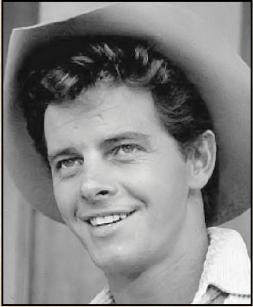
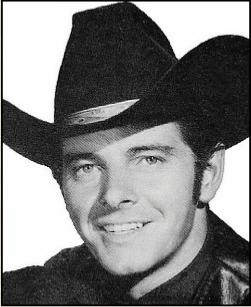
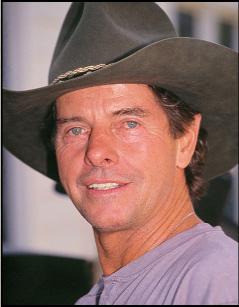
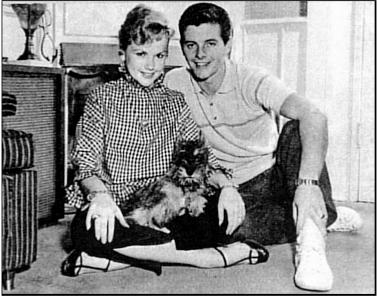
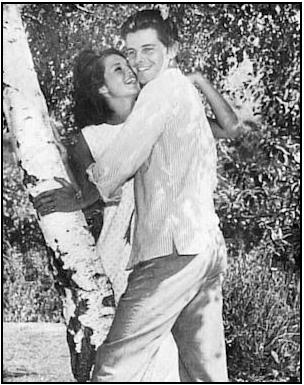
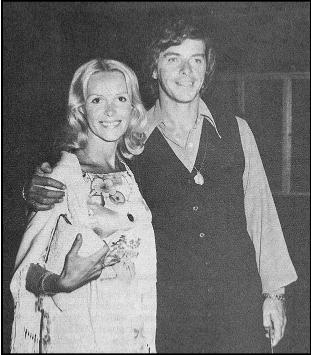
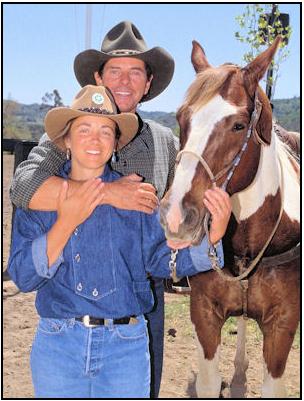
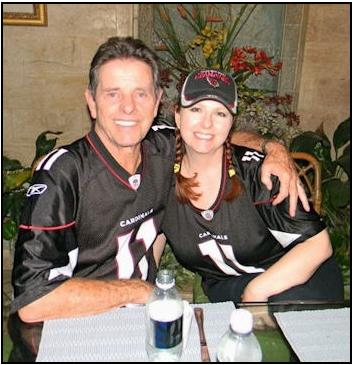
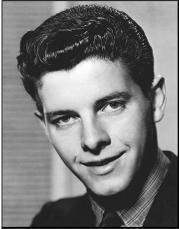
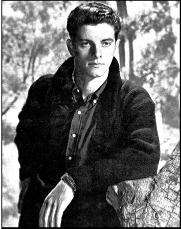
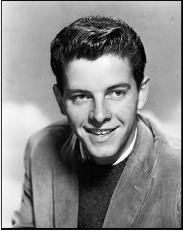
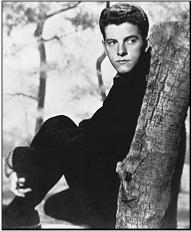
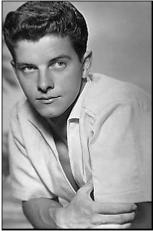
Peter was offered work in a military recruiting commercial to "Join the Army." He nearly turned it down when he was told he would have to cut his hair military style. "Oh no," he said, "I'm only just out of the army himself and my hair has just begun to grow out." Upon being told he could get his Screen Actors Guild (SAG) card for doing the commercial, Peter said, "Get the scissors!"
Peter became involved in acting as an adult while stationed in Alaska with the Second Infantry Division. USO shows were infrequent so Peter organized a drama group which put on a couple of dozen shows during his stay. Peter performed as an actor in all of the plays and directed some of them.
Some of Peter's earliest publicity photos.
Although they set October 11, 1958 as their wedding date, Peter and actress Diane Jergens had to revise their plans when the studio scheduled a conflicting ten day tour, for Peter and John Russell, to promote the premiere of Lawman. Rather than wait any longer to be married, Peter and Diane eloped on September 6, 1958.
In her autobiography, Ann-Margret, who dated Peter when she first came to Hollywood, said that one of the things she always remembered and admired about him was how wonderful he was to his fans. Ann-Margret also credited Peter with giving her her "first introduction to the glitter and hoopla of Hollywood" by taking her to Hollywood parties and premieres. Later, it was Peter who introduced her to Roger Smith, the man who was later to become her husband in one of the most successful marriages in Hollywood.
With Peter, there was never a hint of any drug abuse or the kind of alcohol excesses that Edd Byrnes, one of his friends in the early TV years, talked about in his autobiography, but it is suggested that he led an active social life. And of course, as baby boomers ourselves, we would greet with disbelief any claim of abstention from the then ubiquitous social use of marijuana by a party boy like Peter. Around the time of Troy Donahue's death (Troy had some serious abuse problems), we asked Peter how he avoided the grip of substance abuse that caught up many of his friends. He just told us he never had any interest in that stuff.

Official Peter Brown Fan Site
Contact us at outrider@peterbrown.tv
